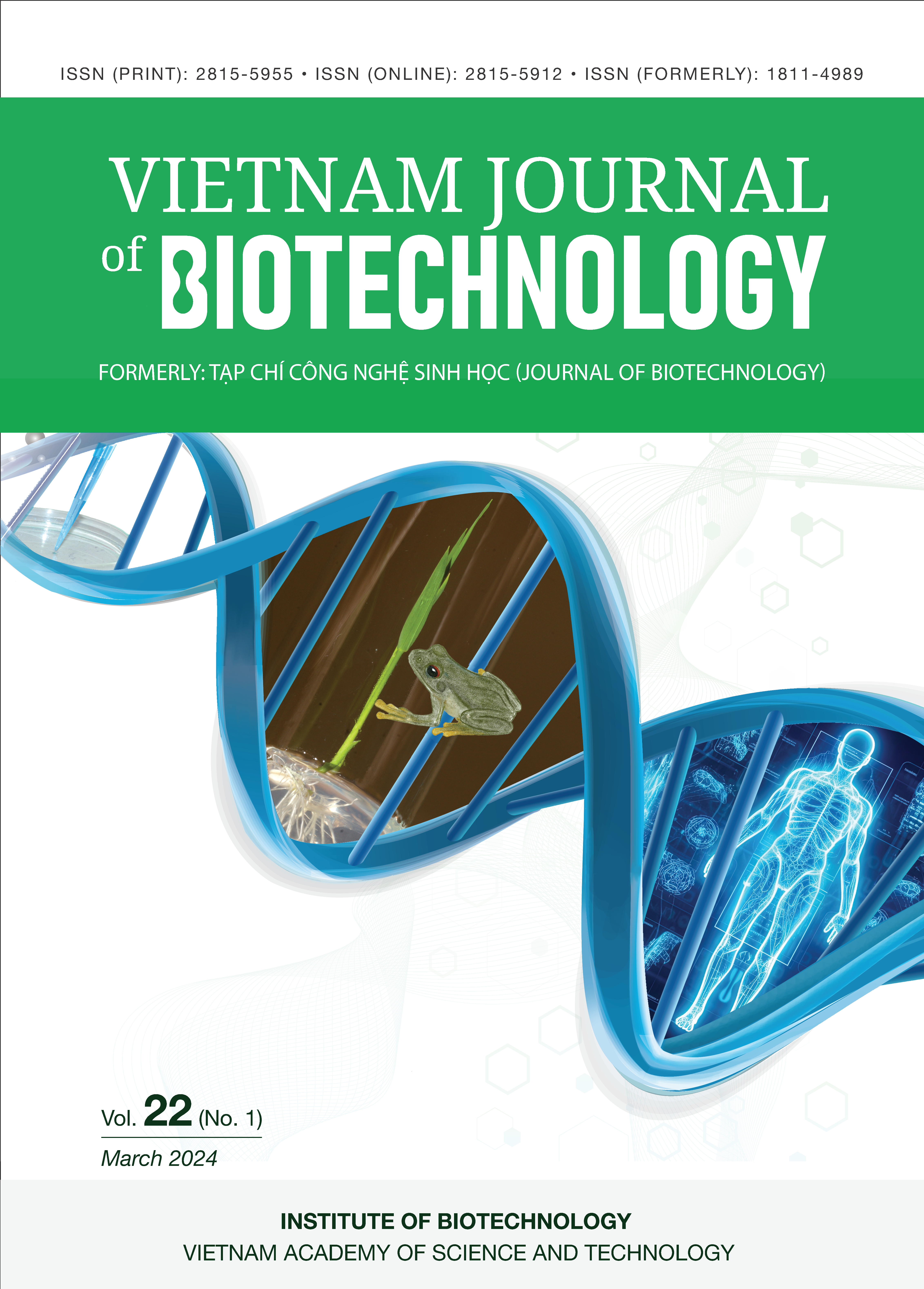Expression of soluble recombinant human SUMO protease’s active region fused with thioredoxin in Escherichia coli
Author affiliations
DOI:
https://doi.org/10.15625/vjbt-19502Keywords:
thioredoxin, SUMO protease, recombinant expression, E. coliAbstract
The human’s SUMO protease is commonly used in gene expression studies. However, it is challenging to extract this enzyme from its natural host due to degradation during extraction and high cost. Recombinant expression using Escherichia coli is considered for its high production from the fast growth rate and feasible manipulation. In this study, we aimed to express the human SUMO protease’s active region from the catalytic domain ranging from 364 to 589 amino acids (SENP2) in E. coli. The SENP2 gene sequence was optimized to improve the codon adaptation index from 0.63 to 0.88. It was artificially synthesized and cloned into both pET22b (+) and pET32a (+) expression vectors for the production of unfused SENP2 protein and thioredoxin fused SENP2 protein (Trx-SENP2) in E. coli BL21 (DE3). In the pET22b(+) vector, SENP2 was highly expressed at temperatures ranging from 20 to 37°C but accumulated insoluble fractions and did not exhibit activity. The fusion protein Trx-SENP2 was soluble in pET32a(+) and was overexpressed up to 75% of total recombinant proteins at 25°C. For soluble Trx-SENP2 production 0.3 mM of IPTG was used. Upon applying the soluble protein fusion Trx-SENP2 to the SUMO-IL11 complex, two fragments corresponding to the size of SUMO and IL-11 were obtained. To the best of our knowledge, this is the first report showing that the catalytic domain of humnan's SUMO protease was overexpressed in the fusion form with Trx in E. coli and exhibited high activity. The recombinant Trx-SENP2 will be purified and characterized for application of SUMO-fused protein research.







